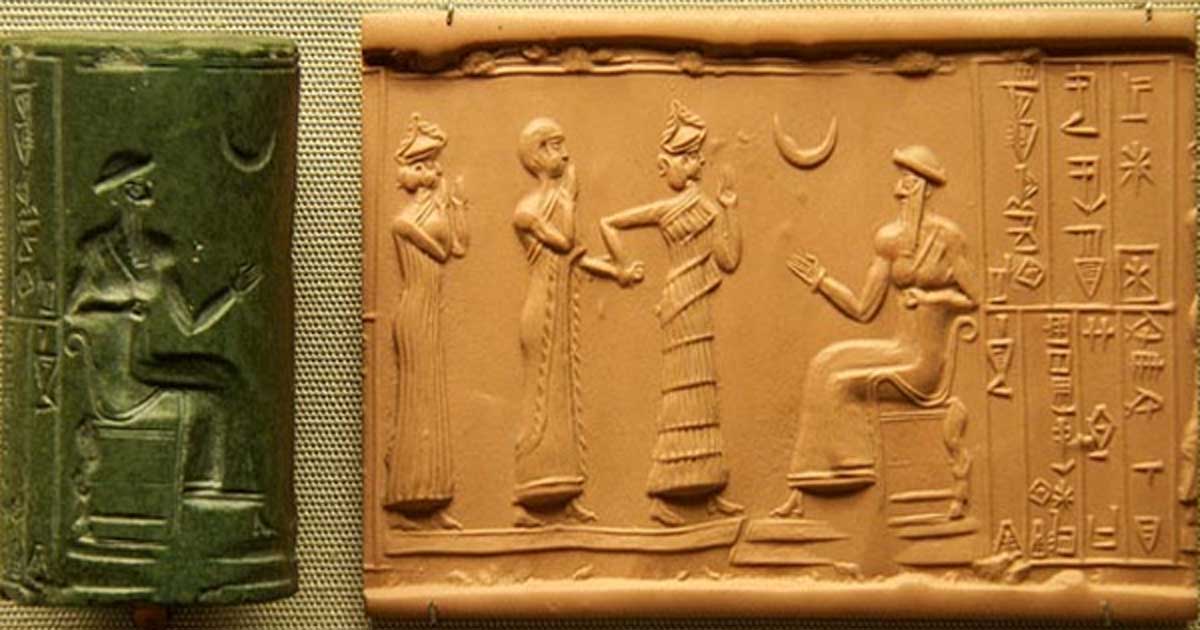Leaving an Impression: Revealing the Intricate Story of Sumerian Cylinder Seals
A cylinder seal is a small cylindrical object with images, words, or both, engraved onto it. Sumerian cylinder seals would be rolled over wet clay to make an impression. When the clay dried, a seal would be formed. These seals were used for a number of different purposes in Sumer, including for the transaction of business, decoration, and correspondence. Sometimes the images presented on the seal could be quite complex and beautiful. Cylinder seals were used by various cultures in the ancient Near East, including the Sumerians, Akkadians, Hittites, and Persians.
Materials and Uses of Sumerian Cylinder Seals
According to some scholars, cylinder seals were first used in Syria between the 8th and 7th millennium BC. Others, however, disagree, arguing that they were invented in Sumer (in modern Iraq) around the 4th millennium BC. Some scholars have argued that stamp seals preceded cylinder seals, whilst others propose that the two were used contemporaneously.
Sumerian cylinder seals were usually made of stone (both common and semi-precious stones), such as amethyst, obsidian, hematite, and lapis lazuli (preferred for the beauty of the blue stone). Nevertheless, other materials, including glass, ceramics, gold, silver, wood, bone, and ivory, have also been used to produce these objects in the ancient world.
- The Sumerian King List still puzzles historians after more than a century of research
- The Rise and Fall of Sumer and Akkad
- Iraqi Transport Minister Announces that Sumerians Launched Spaceships 7,000 Years Ago
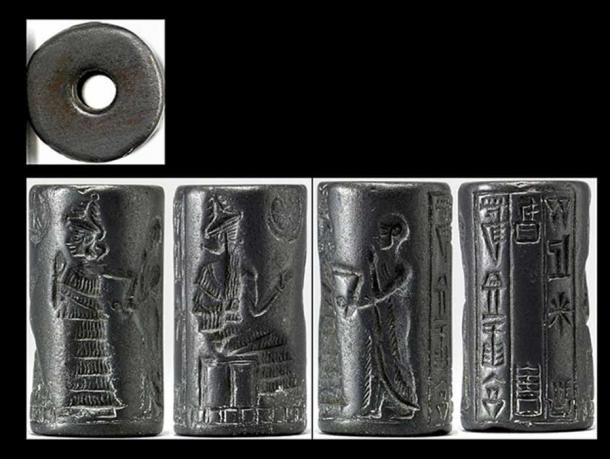
A Neo-Sumerian (circa. 2150 -2000 BC) hematite cylinder seal depicting the presentation of a worshiper to a seated deity. An interceding goddess in a tiered dress leads the worshiper, who holds one hand before his face in a pious gesture. The three-line inscription records the seal owner's name and occupation: "Lugal-dugedu, the scribe, son of Ur-dingira." (Walters Art Museum)
Sumerian cylinder seals were used for various purposes. For example, these seals could have holes drilled into them, so that they could then be used as a sort of necklace, or pinned onto a garment. One example of this type of Sumerian cylinder seal was found on the skeletal remains of Queen Puabi in the Royal Cemetery of Ur. The queen’s seal also had a gold cap, which was fastened on to one end of the cylinder with bitumen. The cylinder seal, as well as its gold cap, would have been worn by the queen as a display of her high status. Some Sumerian cylinder seals were also used as amulets to ward off evil spirits and to bring luck and prosperity to their wearers.
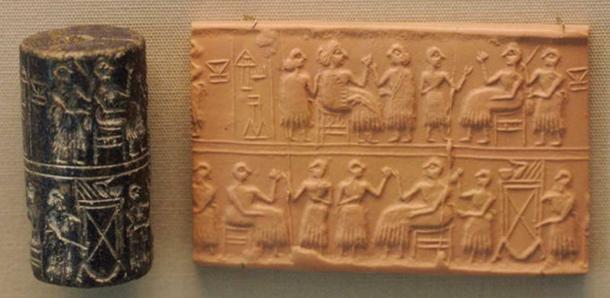
Cylinder-seal of the "Lady" or "Queen" (Sumerian NIN) Puabi, c. 2600 BC. Banquet scene, typical of the Early Dynastic Period. (Nic McPhee/CC BY SA 2.0)
Apart from being status symbols and amulets, Sumerian cylinder seals also had practical uses. For example, they were used as a kind of signature for documents, which were in the form of clay tablets. By using the seal to make an impression on a piece of wet clay tablet, a person may certify that the said document is genuine. This need for the authentication of documents occurred with a rise in bureaucracy, which happened in Mesopotamia, especially in the southern part, where it was more complex, during the 4th millennium BC. In business / trade, cylinder seals could be used to ensure that stored goods were not tampered with or stolen. Thus, impressions made by cylinder seals have been found on clay used to seal storage jars or the doors of storage rooms on ancient Sumer.
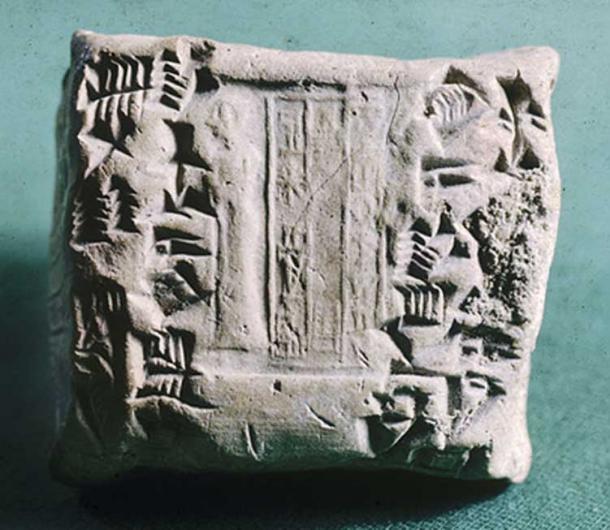
Before the writing was added, this tablet, a receipt, was marked with a cylinder seal dated to the reign of King Shulgi of Ur. Still visible is a typical Sumerian (Ur III) depiction of a standing figure of a worshiper with one hand raised, and three lines of an inscription with the name of a scribe - suggesting that the seal may have belonged to the person who wrote the tablet. (2100-2050 BC) (Walters Art Museum)
The Intricate Carvings of Sumerian Cylinder Seals
The designs on Sumerian cylinder seals have also attracted a lot of attention, as they are intricate carvings consisting of various themes. Seals from Sumer were usually focused on three main subjects: contest themes, banquet scenes, and religious themes. Deities, humans, animals, plants, and religious iconography all appear on these artifacts. Other designs found on Sumerian cylinder seals may include geometric designs and inscriptions in cuneiform script.
- Sumerians Looked to the Heavens as They Invented the System of Time… And We Still Use it Today
- The Kesh Temple Hymn: 5,600-Year-Old Sumerian Hymn Praises Enlil, Ruler of Gods
- The Sumerian Military: Professionals of Weaponry and Warfare
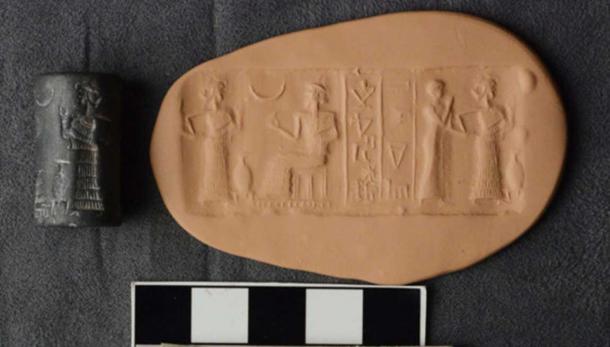
A hematite cylinder seal, Sumerian, 2112-2004 BC. (Johns Hopkins University) The scene on this seal represents the standard “presentation scene” of the Ur III period, showing a human worshipper – probably representing the seal’s owner– led by a goddess before an enthroned deity. An inscription, written in cuneiform, identifies its owner as “Aḫa-nīšu, servant of Nūr-Šulgi.”
Sumerian Cylinder Seals Today
In the archaeological record, both cylinder seals and the clay they were impressed on have been found. Many Sumerian cylinder seals are displayed in museums around the world. The Iraq Museum of Baghdad, for example, had a collection of 7000 cylinder seals, most of which were looted when Baghdad fell to US forces in 2003. These valuable artifacts have yet to be recovered.
Cylinder seals continued to be used up until the 1st millennium BC. In the Spurlock Museum in Illinois, for instance, there are seals from as late as 450 BC. Nevertheless, during this millennium, clay tablets were gradually being replaced by papyrus parchment as the writing material of choice for the ancient world. As a result of this, cylinder seals began to fall out of fashion, and eventually became obsolete. However, Sumerian and other cylinder seals remain prized possessions in the collections of many museums worldwide.
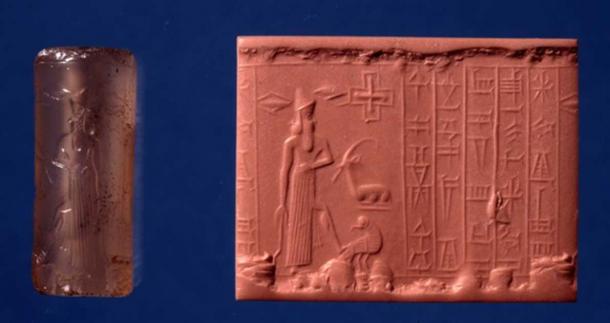
A quartz, chalcedony cylinder seal depicting a bearded male figure holding a curved sword. He has one foot on the back of a bird of prey that turns its head back towards the god. The five-line Sumerian inscription reads: Marduk, great lord, the noble, into whose hands, decisions in heaven and earth are assigned, may the servant who reverences you rejoice before you. In the British Museum’s collection. (CC BY-NC-SA 4.0)
Top Image: Greenstone cylinder seal, Neo-Sumerian, about 2100 BC, from Babylon. Source: Steve Harris/CC BY NC 2.0
By Wu Mingren
References
sumerianshakespeare.com, 2017. Images of Sumerian Life. [Online]
Available at: http://sumerianshakespeare.com/106901.html
Tharoor, K. & Maruf, M., 2016. Museum of Lost Objects: Looted Sumerian Seal. [Online]
Available at: http://www.bbc.com/news/magazine-35774900
The Johns Hopkins Archaeological Museum, 2017. Ancient Cylinder Seals. [Online]
Available at: http://archaeologicalmuseum.jhu.edu/the-collection/object-stories/cylinder-seals-from-the-ancient-near-east/
University of Illinois Board of Trustees, 2017. Mesopotamian Cylinder Seals Collection. [Online]
Available at: http://www.spurlock.illinois.edu/collections/notable-collections/profiles/cylinder-seals.html
West Semitic Research Project, 2016. Cylinder Seals and the West Semitic Research Project. [Online]
Available at: http://wsrp.usc.edu/educational_site/ancient_texts/cylinder_seals.shtml
www.crystalinks.com, 2017. Sumerian Cylinder Seals. [Online]
Available at: http://www.crystalinks.com/sumercylinderseals.html
















